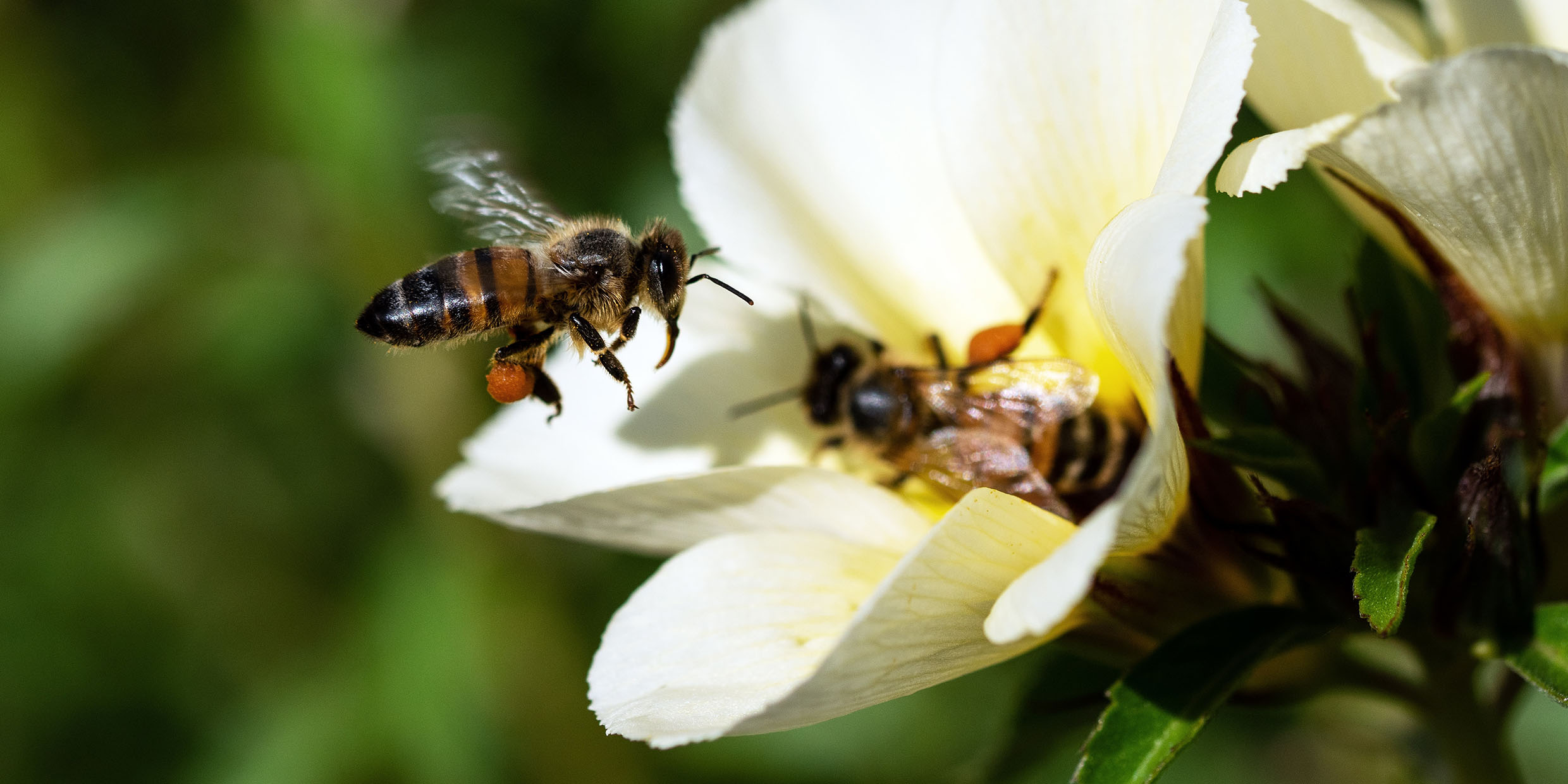Originally published 3 April 1989
In the days before television replaced nature in the lives of children, parents told their offspring about the birds and the bees. Or so it is said.
No one in the house I grew up in ever mentioned birds or bees (or human sex either, for that matter). But somewhere in the family library I found The Life of the Bee by Maurice Maeterlinck, famed Belgian man of letters, naturalist and beekeeper. Maeterlinck’s book, published in this country in 1901, was a popular classic of natural history. Countless kids, including me, found within its pages all the sex education our innocent minds could absorb.
Consider this typical passage from the chapter on the queen bee’s nuptial flight: “Around the virgin queen, and dwelling with her in the hive, are hundreds of exuberant males, forever drunk on honey; the sole reason for their existence being one act of love.” Even now, in these more explicit times, Maeterlinck’s gushing prose makes blush whatever cheek of innocence we still can turn to the central mystery of sex.
What Hollywood scriptwriter ever penned a steamier copulatory scene than this: “She, drunk with her wings, obeying the magnificent law of the race that chooses her lover, and enacts that the strongest alone shall attain her in the solitude of the ether, rises still; and, for the first time in her life, the blue morning air rushes into her stigmata, singing its song, like the blood of heaven…she summons her wings for one final effort; and now the chosen of incomprehensible forces has reached her, has seized her, and bounding aloft with united impetus, the ascending spiral of their intertwined flight whirls for one second in the hostile madness of love.”
Projecting human traits
Victorian naturalists drew more honey from the sex lives of birds and bees than any bee ever drew from a blossom, and if they projected onto winged creatures something of their own libidos, well, it has been a commonplace since Aesop to endow animals with human traits. Modern naturalists report their observations in language less fervid than Maeterlinck’s, but still, perhaps, project. Examples are not hard to find.
In the February [1989] issue of The American Naturalist, Eivin Røskaft, Jan Ove Gjershaug, and Torbjörn Järvi, Norwegian ethologists, report observations of pied flycatchers, a small black-and-white birds that have been favorite subjects for those who study animal behaviors. Their article is entitled “Marriage Entrapment by ‘Solitary Mothers’: A Study on Male Deception by Female Pied Flycatchers.”
Pied flycatchers are polygynous (a single male has several mates). One female is primary, and only she gets help from the male in raising the young. Secondary females must shift for themselves, and their reproductive success can be as much as 55 percent lower than that of their primary sisters, a circumstance that might be expected to evoke — on good Darwinian principles — some compensatory behavior.
The Norwegian researchers looked for such behaviors. Because of the low frequency of secondary females in their study area, they experimentally “widowed” a number of primary females, thereby creating de facto secondaries. Twenty males were removed from their territories after their mates had laid eggs. Of the widowed females, 17 were visited by neighboring males. Six of the females were observed soliciting copulation out of season — something never observed of primary mothers. Three females actually copulated, and one was successful in getting her new mate to adopt her brood of nestlings.
Bluffing partners
Røskaft and colleagues conclude: “Our study shows that, by soliciting copulations, widowed females may have led the new males to believe that they were fathers of their broods. The new males were thus fooled or trapped, even though the females had already laid their eggs and were thus temporarily infertile…Thus, it seems evident that some pied flycatcher…males can be bluffed by ‘widowed’ females into adopting their young.”
The attribution of such deliberate cunning to female pied flycatchers sounds more like Maeterlinck than modern science. We can easily imagine a Victorian father using the story of pied flycatchers to warn his son against women who might “fool” or “trap” him into matrimony. The respected journal Science reinforces this interpretation; its story on the pied flycatcher experiment is titled — with breathtaking generality — “How Females Entrap Males.”
Given the fact that in this particular experiment only one of 20 widowed flycatchers found a male willing to take on the permanent responsibilities of fatherhood, it may be stretching the point to conclude general perfidy on the part of the female of the species. Is one permitted to wonder if breaking up 20 happy households in the name of science is not a greater perfidy than whatever poor, desperate bluff the female flycatcher employs to increase the sustenance of her brood?
The voluptuous language of Victorian naturalists may make us blush, but at least they drew their morals explicitly. Maeterlinck never doubted our affinity with the bee, and had no compunction about using words like “marriage,” “mother,” “fool,” and “entrap” to describe bee behavior. Modern naturalists pretend greater objectivity, but do the same thing.
Perhaps, as the sociobiologists claim, we share enough of our genetic inheritance with the lower orders of life to find in their behaviors instructive parallels to our own; in this, the sociobiologists are the new Maeterlincks.
Or perhaps, because of our bigger brains, human sexual behavior is free from the bonds of instinct. In which case it is just as well that children no longer look to the birds and the bees for sex education.



